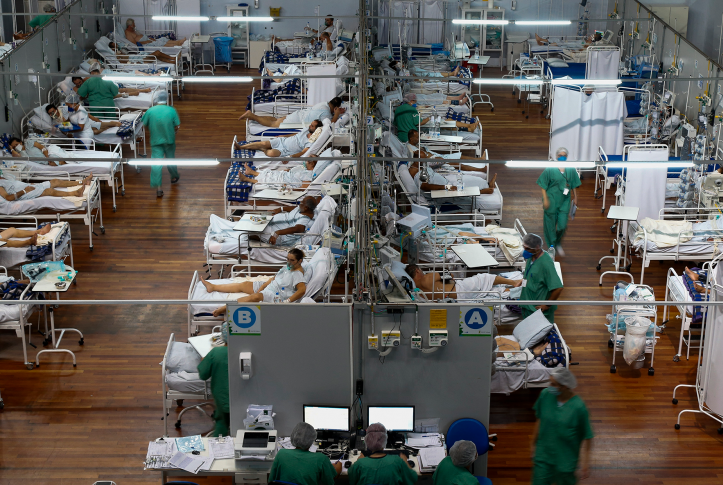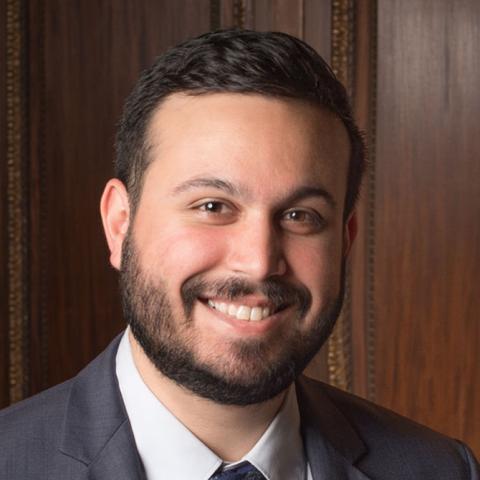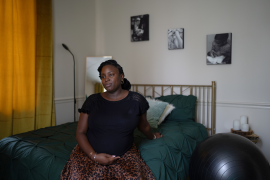The COVID-19 crisis has deteriorated in Latin America. The death toll in Brazil crossed 422,000 on May 10. Latin America has only 8 percent of the world’s population but accounted for 35 percent of deaths in the last week of April.
Latin America was already hit hard by the pandemic in 2020 and a new variant that originated in Brazil is deepening the crisis. As long as the virus is uncontrolled somewhere, it is uncontrolled everywhere. Without a truly global response — which includes ensuring that poorer countries can vaccinate their populations rapidly — the United States and other wealthier countries with high vaccination rates may be unable to keep the most insidious variants at bay, potentially prolonging the pandemic at home.
Why is the outbreak in Latin America so bad?
COVID-19 caused unforetold devastation in Latin America in 2020. Last April, scenes of bodies dumped on the sidewalks of Ecuador’s largest city, Guayaquil, and mass graves dug in the Amazon rainforest in Brazil offered a cautionary tale of how a pandemic plays out in the midst of egregious inequality and political instability.
Social and economic inequality is one of Latin America’s most enduring problems; the pandemic has revealed and worsened it. Other structural factors creating the humanitarian crisis include corruption, political instability, and weak health systems. Brazil, for example, spends $848 on health care per capita, below the world average of $1,111. Other countries, particularly in Central America, spend even less.
The health care system in Brazil is buckling under the strain. The country’s national health system has been neglected for years because of underfunding, an anemic primary care system, and a staffing crisis. The public health system grants universal coverage on paper, but in practice this is inadequate. Bottlenecks in access and dissatisfaction with health services have prompted higher-income people to seek private care.
Now, hospitals are packed beyond capacity. Intensive care units in Brasília, the capital, and 16 of Brazil’s 26 states, report dire shortages of available beds.
How could it spread to the rest of the world?
Viruses do not stop at national borders. As the situation worsened in Brazil, it spilled into neighboring countries. Uruguay, once lauded for its early success at keeping the coronavirus under control, now has one of the highest death rates in the world. Colombia registered its highest daily death toll last week, and Peru recorded more than 250,000 cases in April, its worst month since the pandemic began.
Many experts believe the Brazilian variant is largely responsible for these surges. Since Brazil made no attempt to close the borders of the Amazonian city of Manaus, where the P1 variant originated, and delayed sharing information, P1 is now spreading uncontrolled in Latin America and has been detected around the world — it is growing more common in the U.S. This is cause for concern: the variant is highly contagious, can cause reinfection, and may be resistant to vaccines.
Chile, which had one of the world’s fastest vaccine rollouts, is experiencing a severe second substantial rise in cases. Factors thought to be inhibiting some of the progress of the initial vaccine drive include the spread of P1 and relaxation of public health measures; some experts have voiced concerns about the efficacy of the Chinese-developed vaccine, CoronaVac, which has been widely administered in Chile.
What about political leadership and policy choices?
Brazil’s president, Jair Bolsonaro, has done little to curb the pandemic. Many believe he has made it worse. He has played down the threat of the virus and promoted ineffective and dangerous treatments. Last year, he fired his health minister after a disagreement over physical distancing measures and the next one resigned less than a month later. Brazil has ignored or rejected initial offers to procure millions of doses of vaccines on at least 11 separate occasions, although the country has launched successful mass vaccination campaigns in the past.
Bolsonaro faces similar challenges to those experienced by former U.S. President Donald Trump and India’s Narendra Modi, who is also grappling with a devastating coronavirus surge. Common mistakes these leaders made include ignoring or contradicting scientific advisors and public health recommendations, failing to keep restrictions in place long enough to limit the spread of the virus, and neglecting to communicate clear health measures to the public. Countries with prior success, like Uruguay, grew overconfident. In others, like Peru, leaders are reluctant to impose widespread lockdowns as they did earlier because of the economic devastation those lockdowns caused.
What can be done?
Improve global vaccine access. Without widespread vaccination across the world, the pandemic will continue to run rampant. As others have documented in detail, there are several policy levers the United States can use to spur vaccinations, including increasing in-kind donations of COVID-19 vaccines, providing funding and support for global vaccine procurement and distribution, helping to expand global vaccine manufacturing capacity, and relaxing or waiving patent restrictions related to COVID-19 vaccines. This final issue is being debated at the World Trade Organization. The Biden administration last week said it supported waiving the patent protections, although this may not increase availability in the immediate future.
Implement public health measures and increase health system capacity. Experts have warned that relying on vaccines alone will not stop the current wave, particularly in places like Latin America, where variants like P1 could render vaccines less effective and widespread infection could lead to the emergence of new variants. Countries can implement proven public health measures like mask-wearing and social distancing as part of a comprehensive strategy to limit the spread of the virus. Addressing misinformation around COVID-19 vaccines is important so that once doses are available, people get vaccinated.
In Latin America, there is also a great need to strengthen national regulatory authorities that are in charge of ensuring the safety and effectiveness of new medicines. In the longer term, there should be a focus on investing in health care infrastructure and addressing the structural inequalities that have pushed so many people, already living in poverty, over the edge.
Even as the U.S. and other high-income countries make progress in vaccination and look toward reopening, rising cases in other parts of the world, notably India and Latin America, threaten to stymie success and prolong the global pandemic.





